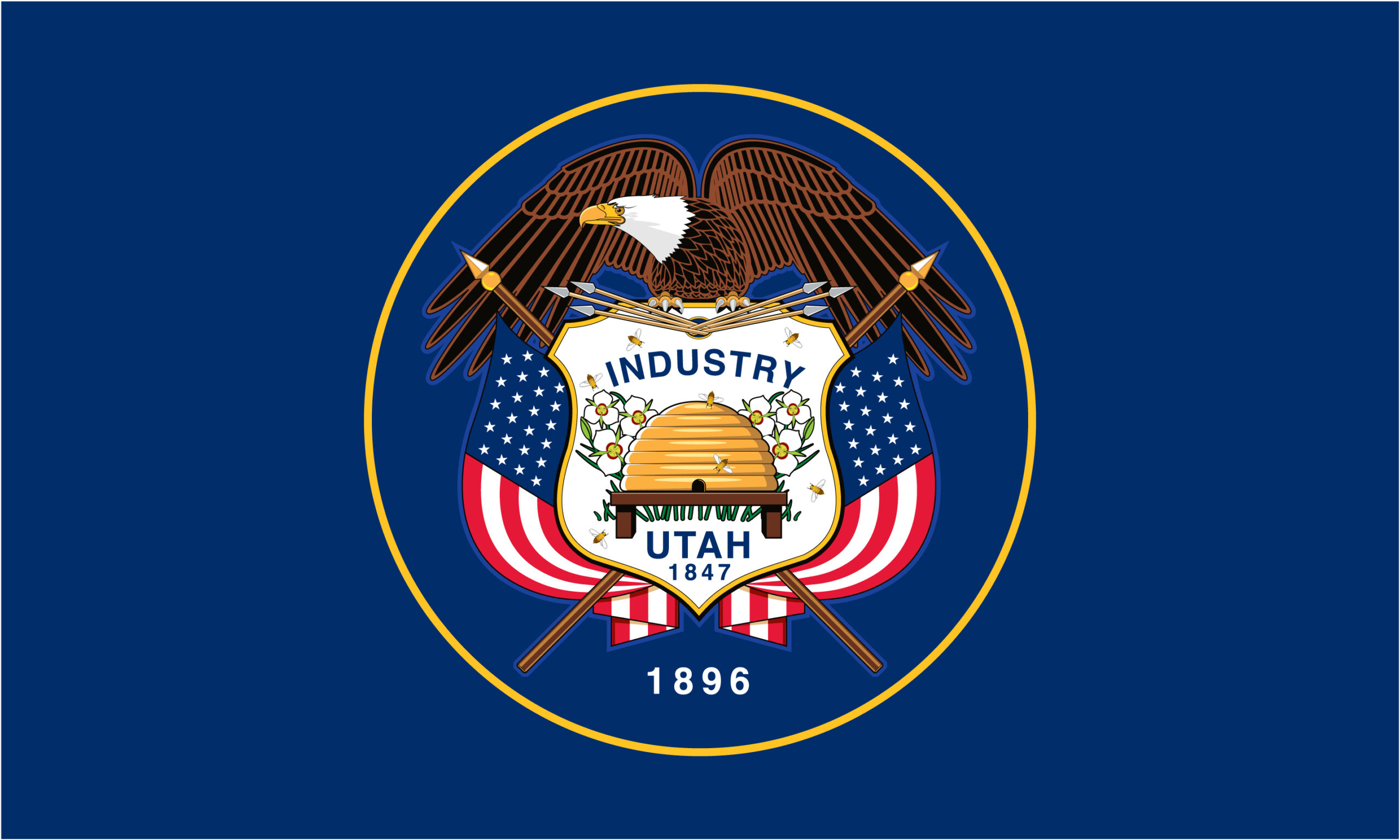Utah Security Deposit Laws are an essential aspect of renting a property, ensuring that both landlords and tenants understand their rights and obligations. Whether you are a landlord looking to charge a security deposit or a tenant seeking to protect your deposit, it is crucial to be familiar with the laws in place. The purpose of this article is to provide an overview of the Utah Security Deposit Laws, including recent changes that have come into effect in 2024.
Before diving into the details, let’s begin by understanding what a security deposit entails. A security deposit is a sum of money paid by the tenant to the landlord at the start of the tenancy. It serves as a form of financial protection for the landlord in the event of any damage to the rental property or unpaid rent by the tenant.
Utah has specific laws governing security deposits to ensure transparency and fairness for both parties involved. This article aims to explain these laws, highlighting the key points and any recent updates as of 2024. it will address the permissible amount that landlords can charge as a security deposit and the rights and responsibilities of both landlords and tenants concerning the deposit.
For landlords, it is important to understand the obligations regarding the return of the security deposit and the conditions under which deductions can be made. Tenants, on the other hand, should be aware of their rights and protections, including options for dispute resolution and steps to take if they encounter any issues with their security deposit.
By providing valuable insights and practical tips, this article will serve as a comprehensive guide for Utah tenants, helping them protect their security deposit and navigate any potential challenges that may arise during their tenancy.
Key takeaways:
- Increased protections for tenants: The changes in Utah security deposit laws in 2024 provide enhanced rights and protections for tenants, ensuring fair treatment and preventing unfair deductions from the security deposit.
- Clear guidelines for landlords: The updated laws offer clearer guidelines for landlords regarding the amount they can charge for a security deposit, their obligations to return the deposit, and the conditions under which deductions can be made.
- Effective dispute resolution options: Utah tenants facing security deposit issues now have more accessible options for resolving disputes, allowing for a quicker and more efficient resolution process.

Understanding Utah Security Deposit Laws
Understanding Utah security deposit laws is crucial for both tenants and landlords. Here are some key points to consider:
– Utah law allows landlords to charge a security deposit, typically equal to one month’s rent.
– Landlords must provide an itemized list of any deductions from the deposit within 30 days of the tenant moving out.
– In Utah, the landlord must return the security deposit within 30 days of the tenant moving out.
– If a landlord wrongfully withholds the security deposit, tenants have the right to take legal action.
Jane rented an apartment in Utah and took care of it during her tenancy. When she moved out, her landlord refused to return her security deposit without any valid reason. Jane educated herself about Utah’s security deposit laws and filed a complaint. Eventually, she received her full deposit back, thanks to her understanding of the laws.
What is a Security Deposit?
A security deposit is a sum of money paid by a tenant to a landlord or property owner before moving into a rental property. It serves as financial protection for the landlord in case the tenant causes damage to the property or fails to fulfill their rental agreement. The deposit is usually refundable after the tenant moves out, provided there is no damage or outstanding rent. The security deposit can be used to cover unpaid rent or other financial obligations owed by the tenant. It is important for both landlords and tenants to understand the terms and conditions of the security deposit to avoid any disputes.
Overview of Utah Security Deposit Laws
Utah Security Deposit Laws: What’s new in 2024? In this overview, we’ll delve into the key points of Utah’s security deposit laws, highlighting the recent changes that came into effect. Whether you’re a tenant or a landlord, understanding these regulations is crucial to ensure a smooth renting experience. So, let’s explore what you need to know about Utah’s security deposit laws and how they have evolved in 2024.
Key Points of Utah Security Deposit Laws
Key points of Utah security deposit laws are essential for both landlords and tenants to understand their rights and responsibilities. These laws ensure a fair and transparent process concerning security deposits in Utah.
Utah security deposit laws outline several crucial aspects:
| – Maximum Amount: | Landlords are allowed to charge a security deposit of up to one month’s rent. |
| – Use of Deposit: | The purpose of the security deposit is to cover unpaid rent, repairs for damages beyond normal wear and tear, and cleaning expenses. |
| – Inspection: | Before and after the tenancy, landlords must conduct a move-in and move-out inspection to document the condition of the property accurately. |
| – Return of Deposit: | Within a timeline of 30 days, landlords are obliged to either return the full deposit or provide an itemized list of deductions. |
| – Dispute Resolution: | In case of any dispute regarding the security deposit, tenants and landlords have the option to pursue mediation or take legal action. |
These key points of Utah security deposit laws ensure a fair relationship between landlords and tenants, promoting transparency and accountability.
Changes in Utah Security Deposit Laws in 2024
Changes in Security Deposit Laws in Utah in 2024 may have significant implications for both landlords and tenants. Landlords should be aware of important points, such as the maximum amount they can charge for a security deposit and the conditions under which they can deduct from it. They will also have an obligation to promptly return the security deposit to tenants. On the other hand, tenants will enjoy enhanced rights and protections, including options for dispute resolution and steps they can take if they encounter issues with their security deposit. These changes are aimed at fostering a fair and balanced relationship between landlords and tenants in Utah.
How Much Can Landlords Charge for a Security Deposit in Utah?
When it comes to security deposits in Utah, landlords must adhere to certain regulations. Here is a list of steps to determine how much landlords can charge for a security deposit in Utah:
- Familiarize yourself with Utah state laws regarding security deposits.
- Check if there are any local ordinances that may dictate specific limits on security deposit amounts in Utah.
- Understand that in Utah, there is no statutory limit on how much landlords can charge for a security deposit.
- Consider the rental market and competition in Utah to determine a reasonable amount for the security deposit.
- Take into account factors such as the size of the rental property, its condition, and any potential risks when deciding the security deposit amount in Utah.
- Ensure the security deposit amount is clearly stated in the lease agreement in accordance with Utah laws.
- Return the security deposit within the legal timeframe after the tenant moves out, deducting any valid expenses as allowed by Utah law on security deposits.
Rights and Responsibilities for Landlords
As a landlord, navigating the rights and responsibilities surrounding security deposits is crucial. In this section, we’ll uncover what you need to know about Utah security deposit laws and how they impact you. From understanding the obligations landlords have when returning the security deposit to exploring the conditions under which deductions are permitted, we’ll provide you with the key information to ensure you stay compliant and protect both your tenants and your investments. So, let’s dive in and unravel the intricacies of landlord responsibilities regarding security deposits in Utah.
Landlord’s Obligation to Return the Security Deposit
When it comes to returning the security deposit, landlords have a legal obligation to fulfill their duty. Here are some key points to consider regarding the landlord’s obligation to return the security deposit:
- Timeliness: Landlords are required to return the security deposit within a specific time frame, usually within 30 days after the tenant moves out.
- Deductions: Landlords can only deduct from the security deposit for specific reasons, such as unpaid rent, damages beyond normal wear and tear, or cleaning expenses.
- Itemized Statement: Landlords must provide an itemized statement detailing any deductions made from the security deposit.
- Documentation: It is important for landlords to keep records of any damages or expenses that justify deductions from the security deposit.
To ensure a smooth return of the security deposit, landlords should communicate clearly with tenants, conduct a thorough move-out inspection, and provide proper documentation.
Conditions for Deducting from the Security Deposit
When it comes to deducting from the security deposit in Utah, landlords must follow certain conditions and guidelines. Here are some key points to consider:
- Document damages: Landlords should thoroughly document any damages or necessary repairs with photographs or written descriptions.
- Provide itemized deductions: Landlords must provide tenants with an itemized list of deductions, including the costs and reasons for each deduction.
- Reasonable deductions: Deductions should be reasonable and directly related to the tenant’s actions beyond normal wear and tear.
- Timeline for return: Landlords have 30 days to return the security deposit or provide a written explanation of deductions.
- Dispute resolution: If the tenant disagrees with the deductions, they may enter into a dispute resolution process to resolve the issue.
Tenant’s Rights and Protections
Navigating the realm of tenant’s rights and protections can be overwhelming, but fear not! In this section, we’ll uncover valuable insights to help you handle security deposit issues like a pro. Get ready to explore options for dispute resolution and discover the step-by-step process for tackling those pesky challenges that may arise. Stay informed, assert your rights, and ensure you’re equipped to navigate the ever-changing landscape of Utah’s security deposit laws in 2024 and beyond.
Options for Dispute Resolution
When it comes to resolving disputes related to security deposits in Utah, tenants have several options available to them. One of the options for dispute resolution is mediation. Mediation involves using a neutral third party to help facilitate communication and reach a mutually acceptable resolution between the tenant and the landlord. Another option is arbitration, which is a more formal process that involves a neutral arbitrator who reviews the evidence and makes a final decision on the dispute. If all other options fail, tenants can take their dispute to small claims court, which is another option for dispute resolution. At small claims court, a judge will hear the case and make a binding decision. These dispute resolution options can provide tenants with a fair and efficient way to address any issues they may have regarding their security deposit in Utah.
Steps to Take When Facing Security Deposit Issues
When facing security deposit issues, it’s essential to take the right steps to protect your rights as a tenant. Here are some recommended actions to consider in order to navigate security deposit issues effectively:
1. Review the lease agreement and thoroughly understand the terms regarding the security deposit. This step is crucial to grasp your rights and obligations.
2. Document the condition of the rental unit before moving in and capture photographic evidence. These photos will serve as valuable proof in case of any disputes.
3. Communicate any concerns or issues relating to the security deposit with your landlord in writing. It is essential to keep a copy for your records to ensure proper documentation.
4. Request an itemized list of any deductions made from the security deposit and meticulously verify their validity. This examination will help you determine if the deductions were appropriate.
5. If a resolution cannot be reached with your landlord, it may be prudent to seek legal advice or mediation services. These professional resources can provide guidance on next steps and potential resolutions.
6. Should it become necessary, file a complaint with the appropriate local housing authority or small claims court. This course of action may help facilitate a fair resolution to your security deposit dispute.
Remember, being proactive and having a solid understanding of your rights can significantly contribute to a fair and satisfactory outcome when dealing with security deposit issues.
Important Considerations for Utah Tenants
When renting a property in Utah, it is crucial for tenants to keep in mind some important considerations to protect their rights and ensure a smooth tenancy. Utah tenants should pay attention to the following key points:
1. Lease Agreement: Utah tenants must thoroughly read and understand the lease agreement before signing. It is essential to carefully review important clauses such as the rent amount, due date, maintenance responsibilities, and lease termination terms.
2. Security Deposit: Understanding the rules regarding security deposits in Utah is vital. Landlords are legally obligated to provide a written itemized list of deductions within 30 days after a tenant moves out.
3. Repairs and Maintenance: The responsibility of providing habitable conditions lies with the landlords in Utah. Tenants should promptly report any maintenance issues and document all communication to ensure timely repairs.
4. Privacy: Tenants should be aware of their rights to privacy. In Utah, landlords must give reasonable notice before entering the rental unit, except in emergency situations.
5. Notice to Vacate: Familiarize yourself with the notice requirements for ending your tenancy. In most cases, tenants in Utah are required to give a written notice at least 15 days before moving out.
Utah has a history of being proactive in protecting tenant rights. In 2021, new laws were implemented to strengthen tenant protections, specifically addressing security deposits and eviction proceedings. These laws aim to foster fair and transparent landlord-tenant relationships throughout the state.
Some Facts About Utah Security Deposit Laws: What’s new in 2024
- ✅ Landlords in Utah are required to refund refundable deposits and pre-paid rent to tenants once the tenancy has ended. (Source: Utah Courts)
- ✅ Landlords are allowed to deduct from the deposit for payment of rent, damages beyond reasonable wear and tear, cleaning, and other contract specified costs. (Source: Utah Courts)
- ✅ Landlords must provide tenants with a written, itemized list of deductions made from the deposit. (Source: Utah Courts)
- ✅ The landlord must refund the deposit within 30 days after the tenancy has ended and deliver it to the tenant’s last-known address. (Source: Utah Courts)
- ✅ If the landlord fails to return the deposit within 30 days or provide an itemized list of deductions, the tenant can take legal action and potentially receive the full deposit, a civil penalty, and court costs and attorney fees. (Source: Utah Courts)
Frequently Asked Questions
What are the Utah security deposit laws regarding refundable deposits and pre-paid rent for tenants?
In Utah, landlords are required by law to refund any refundable deposits and pre-paid rent to tenants once the tenancy has ended, unless the deposits were designated as non-refundable in writing.
Can landlords deduct any amount from the security deposit for various costs?
Yes, landlords in Utah are allowed to deduct from the security deposit for payment of rent, damages beyond reasonable wear and tear, cleaning, and other costs specified in the contract.
What are the landlord’s obligations regarding providing an itemized list of deductions?
If deductions are made from the security deposit, the landlord must provide the tenant with a written, itemized list of those deductions.
Within what timeframe must the landlord refund the security deposit after the tenancy has ended?
The landlord must refund the security deposit within 30 days after the tenancy has ended and deliver it to the tenant’s last-known address. It is important for the tenant to inform the landlord of their current address.
What actions can a tenant take if the landlord fails to return the security deposit within 30 days?
If the landlord fails to return the security deposit within 30 days or provide an itemized list of deductions, the tenant can give the landlord a Tenant’s Notice to Provide Deposit Disposition. This notice can be delivered personally, left with a person of suitable age and discretion at the address, affixed in a conspicuous place, or sent through registered or certified mail.
What can a tenant do if the landlord does not comply with the Tenant’s Notice?
If the landlord does not comply with the Tenant’s Notice within 5 business days, the tenant can sue for the full deposit, the full amount of prepaid rent, a civil penalty of $100, and potentially court costs and attorney fees if the landlord acted in bad faith.
Dave is a seasoned real estate investor with over 12 years of experience in the industry. Specializing in single-family residential real estate, David’s strategic approach combines market analysis, financial acumen, and a deep understanding of urban development trends to maximize investment returns.










